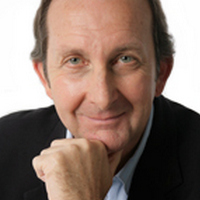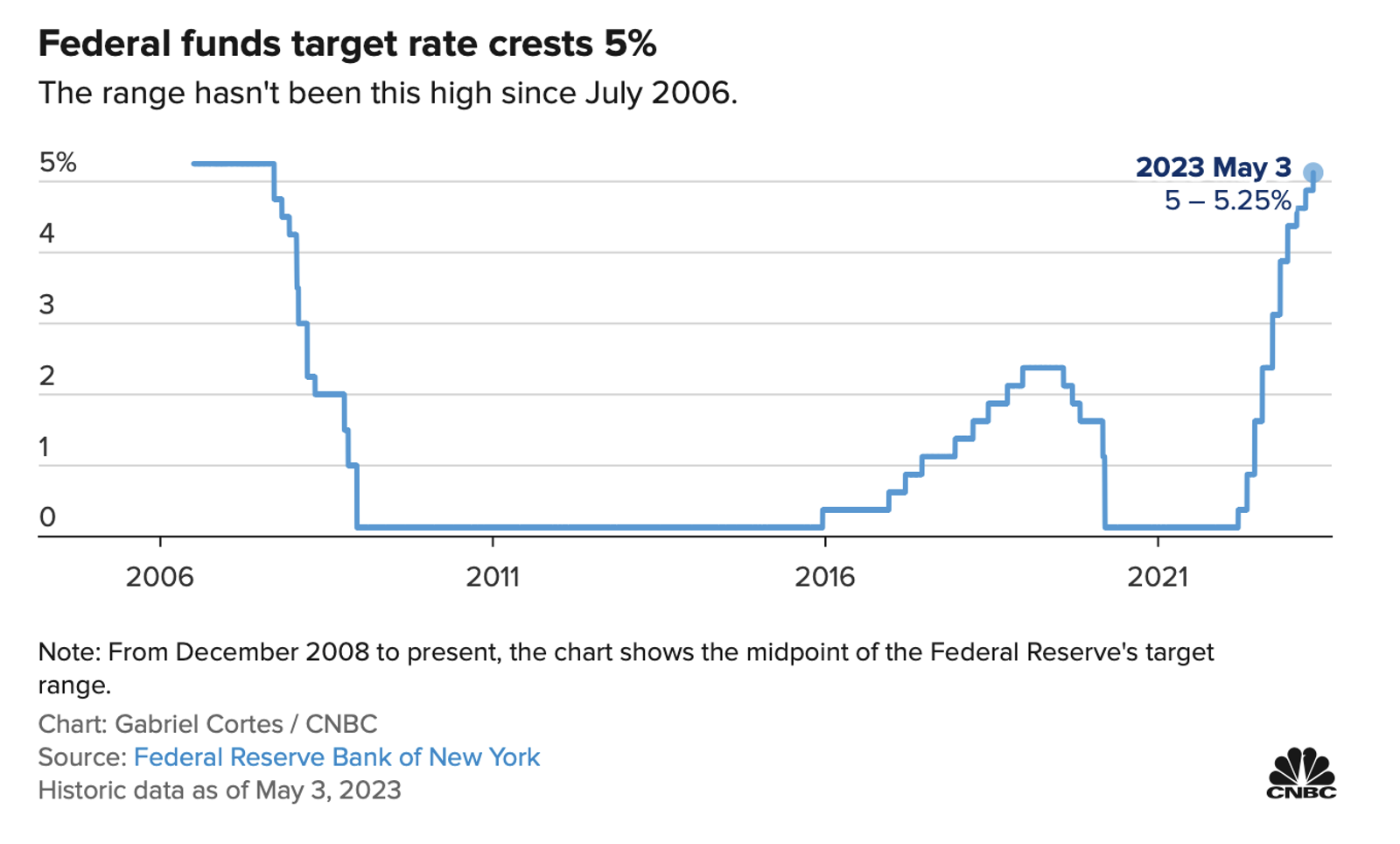

The US central bank, the Fed, raised interest rates again but it was only 0.25% and was expected, but the Fed boss delivered news that the stock market liked, and the good vibes will come down under today and, eventually, beyond!
CNBC used this headline, which in itself carries great news for stocks: “Fed increases rates half a point and signals a potential end to hikes.” And this from the official statement was well received: “The post-meeting statement omitted a sentence present in the central bank’s March comments saying that “the Committee anticipates that some additional policy firming may be appropriate” for the Fed to achieve its 2% inflation goal.
Just like here with Dr Phil Lowe (Governor of the RBA), Federal Reserve Chairman Jerome Powell has to explain why he (and his interest rate committee) has raised rates. However, in the US, this show-and-tell session is more public and official.
Powell actually faces the press, and by the way, that’s what will happen to our central bank supremo after Dr Jim Chalmers changes the way our interest rate movements are determined. You might recall that the Treasurer wants one board of interest rate experts to determine rate changes and another board to run the Bank.
The first question Powell received was from a reporter of The New York Times, who asked if his statement that he’d just read out was implying that in June the Fed could pause with rate rises. Like a typical central banker, Powell didn’t just say yes, but instead used a lot of words that basically said: “We’re not ruling it out and if data comes in that says inflation is falling, then you could see a pause.” (These aren’t his precise words but as he is an economist (and so am I), I think I’m qualified to interpret his utterances.)
By the way, the stock market liked that answer and share prices went up.
The reporter asked Powell if he expected a mild recession. To that he explained how he thought the US economy would keep growing, but increasingly more slowly. His personal forecast was for mild growth and not a mild recession.
But he quickly explained that the Fed (unlike the RBA here) encourages “the staff” (as Powell called them) to have a view on what will happen to the economy. He said they expect a mild recession. I think Wall Street also kind of expects this but it has sold off in the past when it thinks a serious recession might be on the cards.
I watched the Nasdaq Index during his press conference and it remained positive, which I took as a positive sign. It did finish a tad down but didn’t demonstrate market panic or stress from what Powell said. He was a little more dovish than he has been in the past and some commentators think US rate rises are over. However, upcoming economic data will determine that.
Remember, when serious economic concerns (i.e., high inflation, a serious recession and a banking crisis) are behind us, tech stocks will zoom higher, and the Nasdaq is the best thermometer for checking the temperature of tech stock supporters or sellers.
This easing up of the ‘tough guy’ approach from the Fed comes as there have been “…objections of prominent Democratic lawmakers, who urged the Fed this week to stop rate hikes that they insisted could cause a recession and excessive loss of jobs.” (CNBC)
On the subject of banking, the Fed boss made it clear that the banking system was sound. That’s something Wall Street would also like and you have to hope he’s right. “The Fed’s own economists at the March FOMC meeting warned that a shallow recession is likely due to the banking issues,” CNBC’s Jeff Cox reported.
When the Fed pauses and then stops raising rates, it will be good for stocks, provided the mild recession story still seems believable. The equivalent cash rate has been pumped up by the Fed to a target range of 5%-5.25%, which is the highest since August 2007, before the GFC crash hit!
The chart below shows how aggressive the Fed has been. Remember our cash rate is 3.85%.

All we now need is for US economic data to show that these excessive rate rises are actually killing inflation.
Here’s one final piece of history that might make nervous Nellies less scared about a big stocks sell-off: “CNBC PRO looked at the last five times the Fed stopped hiking after a series of increases and found the stock market typically showed nice returns 1 month to 12 months later,” Brian Evans revealed. “The S&P 500 averaged an 8% gain and 21% return 3 months and 12 months out from the central bank’s final hike in a series.”